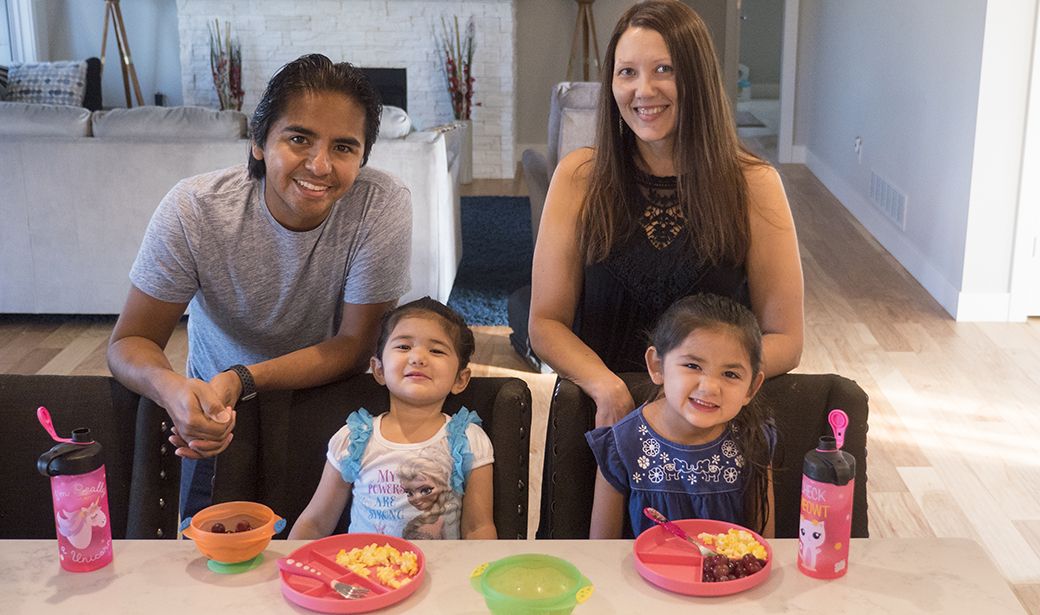A new school year represents a new beginning that starts with a new morning routine. Getting food prepared the night before can help reduce your stress and make healthy choices. Michelle Townsend, a dietitian for MU Health Care, offers some helpful tips to get your new routine on track.
The breakfast benefit
Townsend recommends finding a routine that ensures your kids eat breakfast. It's important to set these healthy habits at a young age so they grow up used to it.
"Kids who eat breakfast perform better in school and on the playground due to better concentration, problem-solving skills and even better eye-hand coordination," Townsend said. "There is also some research indicating that kids who eat breakfast are at a lower risk of becoming overweight or obese as they get older."
Whole-grain cereal, oatmeal and a sprinkle of granola in low-fat yogurt can all serve as quick, healthy breakfast options, Townsend said. She also suggests eating whole fruit instead of drinking fruit juice. Juices tend to be packed with sugar, and the juicing process removes most of the fiber.
Avoid bacon and sausage because they are high in fat and sodium. Instead, try creating breakfast sandwiches using lean deli meats such as ham or turkey.
"One of my go-to breakfasts is a slice of whole grain bread topped with a few slices of avocado and a lean source of protein," Townsend said. "Sometimes I'll use deli meat. Other times I'll use an over-easy or hard-boiled egg."
Townsend suggested making breakfast sandwiches in bulk at the beginning of the week and storing them in the refrigerator for easy access.
Lean lunches
When packing lunches, parents frequently turn to processed foods they can quickly toss into a lunchbox.
"I really like the lunchboxes with the different sections so you can control portions and see the different food groups" Townsend said. "One day might be deli meat on a whole-grain bun with raisins and carrots sticks, and the next day might be one to two hard-boiled eggs with whole-grain goldfish crackers, grapes and a side salad."
Townsend said it doesn't take much time to fill plastic bags with sliced fruit or vegetables — items with more fiber, vitamins and antioxidants than packaged foods. She also said to include a complex carbohydrate such as whole-wheat crackers, a source of protein such as almonds and a water bottle instead of a juice box.
"Including kids in the planning always helps, too," Townsend said. "Having a list of foods in each group that they like and will eat makes packing lunches easier and less stressful."
Sensible snacks
Most kids come home from school in need of a snack to hold them over until dinner. Though it might be tempting to stock up on quick, cheap options such as pizza rolls and ramen noodles, Townsend said parents are better off using after-school snacks as an opportunity to instill healthy eating habits.
"Be realistic for snacks that kids will actually eat," Townsend said. "My son loves chips, and I compromise with him by buying individual bags over big bags so the portion is controlled, and I buy baked chips at least half of the time."
Townsend said to replace common salty snacks with healthier items such as raw vegetables and sliced fruit. Including a protein will help keep your child feeling satisfied, too.
"If it is close to a mealtime, I encourage them to eat fruits and vegetables and wait until dinner," Townsend said. "If it's more than an hour or two before the next meal, I encourage a snack that includes some protein and healthy carbohydrates, which is almost a mini-meal."
Easy choices could include a peanut butter sandwich, hummus with vegetables, string cheese, nuts and dried fruit.
Above all, Townsend says to model good eating habits and a healthy relationship with foods.
"Our kids learn so much from us — and more from what we do than what we say — for good or bad," Townsend said. "All of our palates are adaptable. Give yourself and your kids time to adjust to new, healthy foods. It just takes time and patience."




